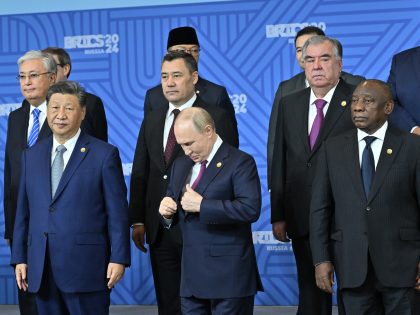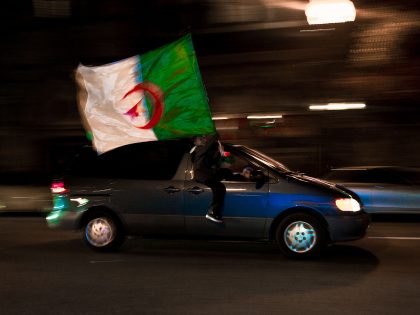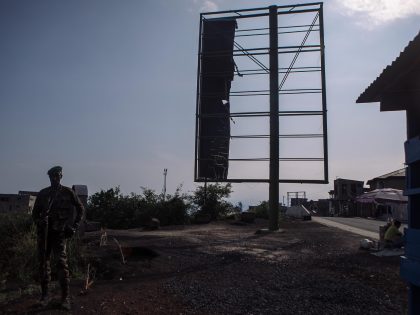Is environmental philanthropy still a white man’s game?
The dominant approach to revitalizing national parks is one-dimensional and sees local residents as obstacles rather than partners.

In our ravaged anthropocene, few things seem more noble and worthwhile than rebuilding a national park, increasing the stock of wildlife, preserving biodiversity and saving the ecosystem. If these efforts manage to turn a profit by attracting tourists, even better. But what happens when well-intentioned foreign aid efforts consider would-be beneficiaries as its enemies?
In her new book, The White Man’s Game, the journalist Stephanie Hanes locates the restoration efforts of Greg Carr, an American philanthropist, in Gorongosa National Park in the central region of Mozambique, within the broader context of foreign aid. Hanes shows that many of the challenges to the preservation effort stem from a one-dimensional approach that sees local residents as obstacles rather than partners in the development effort.
The park in Gorongosa was founded by Portuguese colonists in 1920, but was closed due to the liberation struggle and the civil war that followed Mozambique’s independence from Portugal in 1975. When Carr, who made his fortune in the telecommunications industry, decided to become a full-time philanthropist, he “discovered” the beauty of Gorongosa and decided to offer his help to the Mozambican government. His hope was to restore the park to its former glory. Since 2004, Carr, his Mozambican colleagues, and a growing team of scientists, rangers and other workers have attempted to rebuild the animal population with imports from neighboring South Africa and elsewhere and have taken measures to protect the fragile ecosystem around Mount Gorongosa, from which the park takes its name. After a more general introduction to the challenges of conservation, the link to tourism, and the role of “eco barons” in saving wildlife, the book chronicles the ups and downs of Carr’s endeavor in Mozambique.
The book’s strengths lie in making the link between conservation and development policy and practice more generally, and in chronicling a specific case of how the semi-privatization of space cuts local residents off from their habitat. A short history of colonial writing about nature, wildlife, and people in Africa provides the background for the argument that the narratives that western explorers (and eco barons such as Carr) have created for audiences at home show how the newly discovered “wilderness” becomes a mere backdrop for these explorers’ own adventures. Though superficially these narratives are about nature, animals and people in the places visited, the real protagonists are the foreigners who look for an “out-of-place experience” — the philanthropists, development workers, and tourists. This is, of course, a familiar trope in the colonial imagination aka The Heart of Darkness. What is new is the greenwashed variety in which the western explorer ventures into the wild in the name of conservation.
As a consequence, Hanes successfully shows how not only the narratives of local populations in Gorongosa are marginalized, but also how residents are physically removed from the protected area through enclosures and planned resettlement. Park managers understand forms of community resistance to their interventions as obstacles that need to be overcome by educating people about the benefits of conservation, overlooking the ways in which communities have taken care of their natural habitat for a long time. For example, research has shown that peasants living in the area developed a sophisticated system of slash-and-burn agriculture that park managers only saw as a menace to the park’s ecosystem. As a form of resistance against the prohibition of controlled wildfires, peasants neglected their sophisticated system, letting wildfires burn uncontrolled and thus turning the park managers’ concerns into a self-fulfilling prophecy.
But more generally, communities’ concerns find expression in the narratives of angry spirits that react to the park project’s alleged prioritization of material possessions over the respect for human life. Marginalizing the surrounding communities for the sake of wildlife protection has exposed, in the eyes of the communities, the real purpose of the park endeavor: privatizing space for private profit. It is this neoliberal logic that is the most hard-hitting point of Hanes’ critique, paralleling a recent critique of the philanthropic non-profit industrial complex. Hanes states in the Afterword to the book that those involved in the project have already dismissed the thrust of her analysis although they have not yet read her book. They feel misunderstood; after all, their intentions are good.
The book is a reminder of the complicated nature of the politics of development, but more importantly, it points to a source of misguided intervention, which is mistrust towards the population the work is intended to benefit. As Hanes describes it, this is captured by the term poaching — a central challenge for conservation efforts. Poaching has negative connotations in American and European culture, the positive (or more neutral) term being hunting. Just think of hunting safaris: locals poach and tourists hunt. Poaching can, however, have a diverse set of causes and is not limited to organized crime.
White Man’s Game provides an important corrective for the image of the white savior of wildlife in Africa. It is a valuable read for broad audiences interested in development, conservation, resilience and practices of community resistance. That said, I wished for more exploration in the book of the contradictions within both the western and the local narratives. Residents of Gorongosa, such as the chiefs who understand themselves as gatekeepers, want to benefit from the park, the tourists, the money flowing in. But they want to keep the state (and, by extension, development workers) out. The region is known for a deep mistrust towards the Frelimo government, and the chiefs’ anti-statist stance provides Renamo, the former rebel movement and now largest opposition party, with opportunities for mobilization. That’s why the Gorongosa region has been a staging ground for recent political violence.
Hanes acknowledges the existence of this diverse set of motives of community residents’ reactions to the park, but doesn’t explore them in greater detail. Her narrative remains focused on the white man; local resident’s stories are featured in the book but do not form a red thread throughout. This is a missed opportunity in narrating the politics of development as seen from below.



















